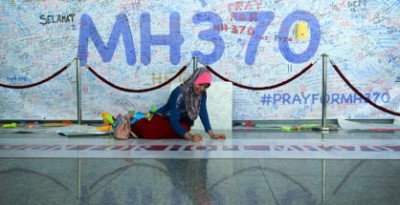Eternal Disappearance: Malaysian Airlines MH370 and the Hangar Gossipers

It has fuelled enough speculation to fill libraries and populate databases at catchy speed. The disappearance of MH370 en route from Kuala Lumpur to Beijing on March 8, 2014, one of two Malaysian Airlines flights to perish that year, continues to torment relatives and tantalise the diviners of mystery.
Ocean Infinity, the Houston-based company retained by the Malaysian government to conduct the vain search for the missing flight, will conclude its contract on May 29. The incentives for Ocean Infinity were considerable, not least the $93 million promised in the event of a successful find over a 90-day search of the southern Indian Ocean. (The company had requested an extension till May 29.) To date, tormenting samples of the flight have washed up.
With little on the table, legal representatives for the families of victims could only scrounge for faint praise for the newly constituted Malaysian government.
“As a lawyer who acts for 76 relatives of passengers on board MH370,” reflected Ganesan Nethi, “I find this to be a very heartening approach and refreshing change of approach by the new Government.”
Inhabiting the grieving world of the living, relatives have been met with opaque processes and unfulfilled promises. MAS was always reluctant to part with compensation monies. The airforce and the Department of Civil Aviation ventured to strike out the claims by families due under law. Claims have been filed in Australia, the United States and China.
Interest in the plane has not diminished. Sporadic reports bubble with near feverish speculation. Last March, an Australian mechanical engineer, Peter McMahon, made the bold and boastful claim that he had found the plane. The mystery had been solved by a meticulous search of Google Earth. With precision, McMahon claimed that wreckage could be found 16km south of Round Island, some 22.5 km north of Mauritius.
This finding was complicated by a minor inconsistency noted by a spokesperson for the Joint Agency Coordination Centre: the prize image had been snapped on November 6, 2009, “more than four years before the flight disappeared.”
Central to McMahon’s contention is secrecy and subterfuge.
“They have made sure that all information received has been hidden from the public, even our government – but why?”
Happily for McMahon, an explanation offers itself: the area cannot be searched because it is being kept out of bounds by US officials. They “do not want it found as it’s full of bullet holes, finding it will only open another inquiry.”
Surviving relatives have offered their own explanations. Ghyslain Wattrelos, who lost his wife and two children, propounds the theory that the plane was shot down. Silence, notably on the part of Vietnam, Malaysia and Thailand, is taken as admission.
Another particularly attractive version is doing the rounds: did the pilot Zaharie Ahmad Shah land the plane somewhere in the Indian Ocean with malicious intent? Unlikely, suggests aviation expert Christine Negroni, dismissing the claim by Canadian air crash investigator, Larry Vance and fellow hangar gossipers.
Vance has been busying himself with the MH370 circuit, which has become something of a cottage industry and extensive meal ticket. Earlier this month, he suggested to Australia’s 60 Minutes that the pilot had taken off fully intent on accomplishing a suicide mission. He “was killing himself; unfortunately, he was killing everybody else on board, and he did it deliberately.”
Much of this amounted to recycling, given Vance’s debut on the MH370 circuit in 2016. Then, Australia’s 60 Minutes similarly pumped Vance for his views, courtesy of prodding by a fairly uncritical correspondent Ross Coulthart.
The suicide theory thereby made its blazing march to absurdity, despite the contrary assertions of the Australian Transport Safety Bureau suggesting that the aircraft “was in a rapid rate of descent” when it met its doom. So much for the guided-landing theory.
Simon Hardy is of similar mind to Vance but prefers to outdo him, even going for a sentimental, soap opera touch. As the pilot flew the plane over Penang, he tipped, according to the mind-reading Hardy, the aircraft wing as a “farewell gesture”.
Negroni will have none of that, withering in her criticism of the Vance-Hardy version as “far-fetched” and peppered with “hokum”. “Ladies and gents, thanks to 60 Minutes, pilots Vance and Hardy are in the cockpit. They’ve fuelled up with alternative facts and are taking us on a flight to the absurd.”
A battle of expertise and faith was bound to propel matters the longer the fruitless search for the plane continued. To Negroni’s own work The Crash Detectives can be added Florence de Changy’s Flight MH370 Did Not Disappear. These struggle in seemingly unsuccessful standoffs with spectacular theories, of which the Vance-Hardy version is one. For Negroni, evidence counts, and Vance, with deluded self-confidence, has ignored such points as a forensic examination which “showed the flaperon was very likely stowed, not deployed when the plane crashed.”
As with other events of the disappearing kind, such events are drearily eternal. Competitive inventiveness displaces the pursuit for empirical verification. Even as Ocean Infinity prepares to pack up its mission, the one thing that will continue humming will be the sort of speculation that, unfortunately, serves to line pockets and garner airtime rather than terminate fables.
*
Dr. Binoy Kampmark was a Commonwealth Scholar at Selwyn College, Cambridge. He lectures at RMIT University, Melbourne. He is a frequent contributor to Global Research and Asia-Pacific Research. Email: [email protected]

